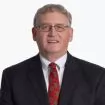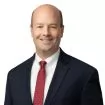- within Compliance, Consumer Protection, Government and Public Sector topic(s)
- with readers working within the Banking & Credit, Business & Consumer Services and Retail & Leisure industries
We are attending the ABA Occupational Safety and Health Law Meeting this week in Santa Barbara, California. This morning a hot topic is developments in OSHA's enforcement programs and initiatives, including the "enforcement weighting system," the increase in penalties, enterprise-wide enforcement, severe violators enforcement program, and criminal prosecutions, etc.
The Solicitor of Labor, Patricia Smith, is here, and she stressed that OSHA will continue to push for enterprise-wide relief as an effective tool for preventing violations. As many employers know, this has historically been a controversial issue in OSHA law because principles of due process and fundamental fairness are strongly implicated when OSHA attempts to enforce alleged violations against facilities where no actual alleged violations were observed or cited by OSHA. Ms. Smith also stressed how the agency believes criminal prosecutions can serve as a very important deterrent. This is an important reminder that OSHA continues to come down hard on employers and push harsh enforcement initiatives.
Tom Galassi, Director of the Directorate of Enforcement at OSHA, is also here and he summarized some of the major OSHA enforcement initiatives:
Penalties. As a reminder, penalties will increase dramatically this summer. This is the first increase in penalties for OSHA citations since 1990. For additional details, please see our previous blog about this issue.
Severe Violations Enforcement Program (SVEP). OSHA will continue to target what it deems to be "severe violators," and, as part of this initiative, seek corporate wide settlements. Importantly, Mr. Galassi noted an increase in SVEP cases this year. There have been 520 SVEP cases this year whereas last year there were fewer than 500. Construction employers should be aware that the construction industry represents over 60% of SVEP cases. Also, 75% of SVEP cases target employers with under 100 employees. The corporate wide settlements that are routinely part of SVEP resolutions continue to be a priority to OSHA as well. These settlements can cover all of a company's facilities across the country, and require measures such as engineering and administrative controls, training requirements, third party audits, and internal corporate monitoring. Something that continues to be controversial is that SVEP can attach to an employer before alleged violations are actually established. In other words, SVEP can attach when citations are issued but before a Judge determines that violations occurred. It is also important for employers to be aware that OSHA state plans must implement SVEP, so even if your facility is not subject to federal OSHA jurisdiction, you can still be subject to SVEP.
Enforcement Weighting System. This is a new system that was launched in 2015 and assigns greater value to "complex" inspections that require more time and resources. The system is apparently designed by OSHA to ensure that certain hazards are given greater weight. The system assigns "units" to inspections. Routine inspections will get one unit, while "complex" inspections involving musculoskeletal disorders, chemical exposures, workplace violence, and process safety management, will get up to 9 units. This system will naturally encourage enforcement personnel to take on complicated inspections, so employers with these "complex" hazards should continue to be on the watch for increased OSHA enforcement.
Enforcement Press Releases. As many employers unfortunately know, OSHA often issues press releases after it issues citations that can have a harmful effect on a company's reputation. These press releases are widely considered to be unfair because they are based on allegations and not actual court findings of violation. Representatives of industry noted that the threshold for issuing the press releases appears to be lowering. One representative noted that a press release was issued based on a $7,000 citation. Employers can expect that OSHA will continue to issue these press releases.
We will continue to provide updates throughout the conference.
The content of this article is intended to provide a general guide to the subject matter. Specialist advice should be sought about your specific circumstances.




